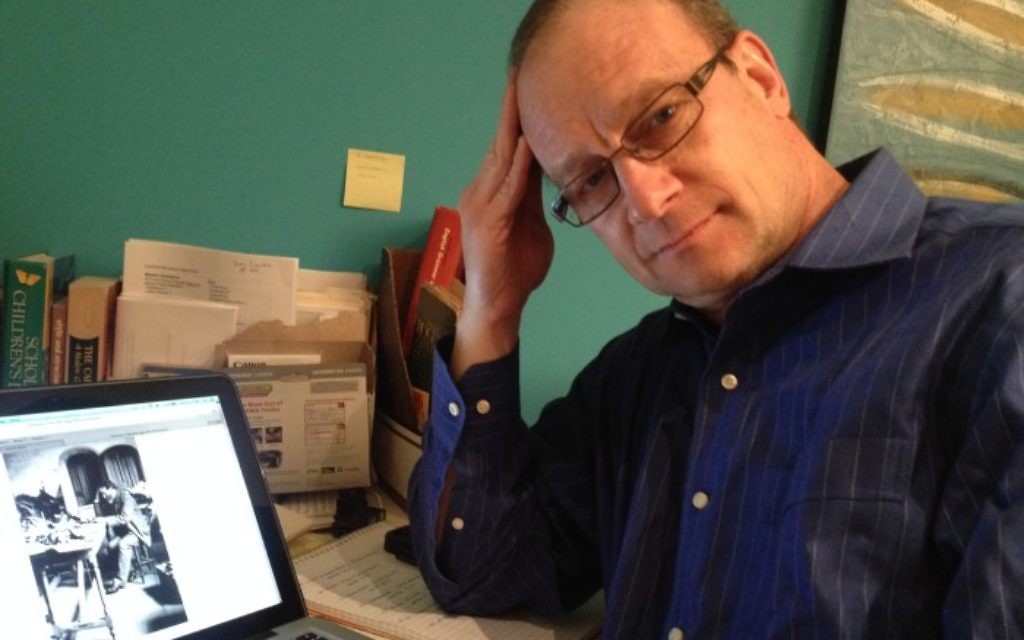Remembering Rabin and a Different Israel
We waited for Defense Minister Yitzhak Rabin outside a government building in central Jerusalem. On arrival, he said he had no idea how long his meeting would last.
A couple of hours later, in the dark, Rabin appeared. You’re still here, he laughed.
He walked down the steps, may have bummed a cigarette from my colleague and briefly spoke with us.
Get The AJT Newsletter by email and never miss our top stories Free Sign Up
These were the mid-1980s, when journalists stood outside the prime minister’s residence in Jerusalem (Shimon Peres and Yitzhak Shamir in those years), hoping for a comment when he emerged. If the prime minister was elsewhere in the country, we waited at the event for a question-and-answer opportunity afterward.
The security detail would look us over, but no one was patted down, and often no bags were searched. It was fairly relaxed and, by today’s standards, lax.
On Saturday, Nov. 4, 1995, now-Prime Minister Rabin spoke to 100,000 people who gathered in Kings of Israel Square in Tel Aviv in support of the Oslo Accords negotiated with the Palestine Liberation Organization.
“Peace entails difficulties, even pain. Israel knows no path devoid of pain. But the path of peace is preferable to the path of war. I say this to you as someone who was a military man and minister of defense,” said Israel’s first native-born prime minister.
The rally ended with the singing of the “Song of Peace” (“Shir ha’Shalom” in Hebrew).
A video shows 25-year-old Yigal Amir, a law student and religious nationalist who considered Rabin’s policies a betrayal of the Jewish people, loitering near the prime minister’s car.
As Rabin approached, Amir fired three shots from a pistol.
Two struck Rabin. The third wounded a bodyguard.
Rabin was bundled into his car. He died at a hospital. (In his pocket was a bloodied lyrics sheet for the “Song of Peace.”)
Amir (now serving a life sentence in prison) was wrestled to the ground.
Amir began plotting in September 1993 after Rabin shook hands with PLO Chairman Yasser Arafat on the White House lawn during an Oslo Accords signing ceremony.
The political opposition, led by Likud leader Benjamin Netanyahu, excoriated Rabin and his foreign minister, Peres.
A second phase of the Oslo agreement was signed in September 1995 at Taba on the Israeli border with Egypt.
The following month, posters depicting Rabin in a Nazi uniform or wearing an Arab headdress were burned at rallies where chants of “Death to Rabin” were reported.
“Violence is undermining the very foundations of Israeli democracy. It must be condemned, denounced and isolated. This is not the way of the state of Israel,” Rabin said in his final speech.
Despite the heated atmosphere, those entrusted with Rabin’s security remained focused on the possibility of an assassination attempt by an Arab, not by an Israeli Jew.
I arrived a few days after the assassination to support the bureau where I had been a producer a decade earlier.
One correspondent repeated the phrase “a panorama of grief” in several dozen live reports for local television stations in the United States.
Kings of Israel Square was alight with memorial candles. Young people kept a vigil, singing songs, chalking messages or sitting with their thoughts.
A week later, what now was called Yitzhak Rabin Square was packed again for a memorial to the slain leader.
Acting Prime Minister Peres arrived in a car flanked by several motorcycles, each carrying a well-armed bodyguard.
There was no approaching for an interview. Those days were over.
They ended the night of Nov. 4, 1995.





comments